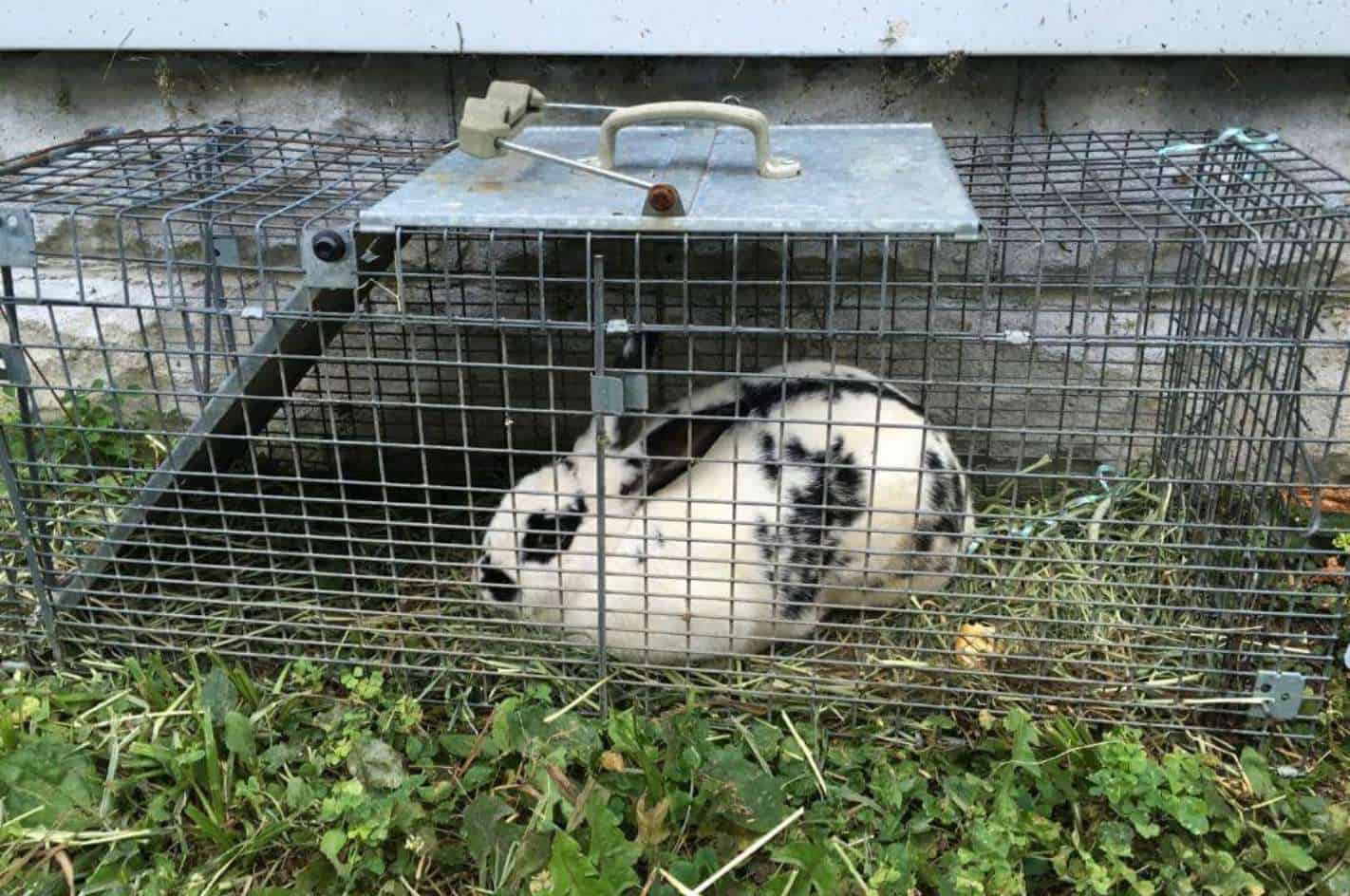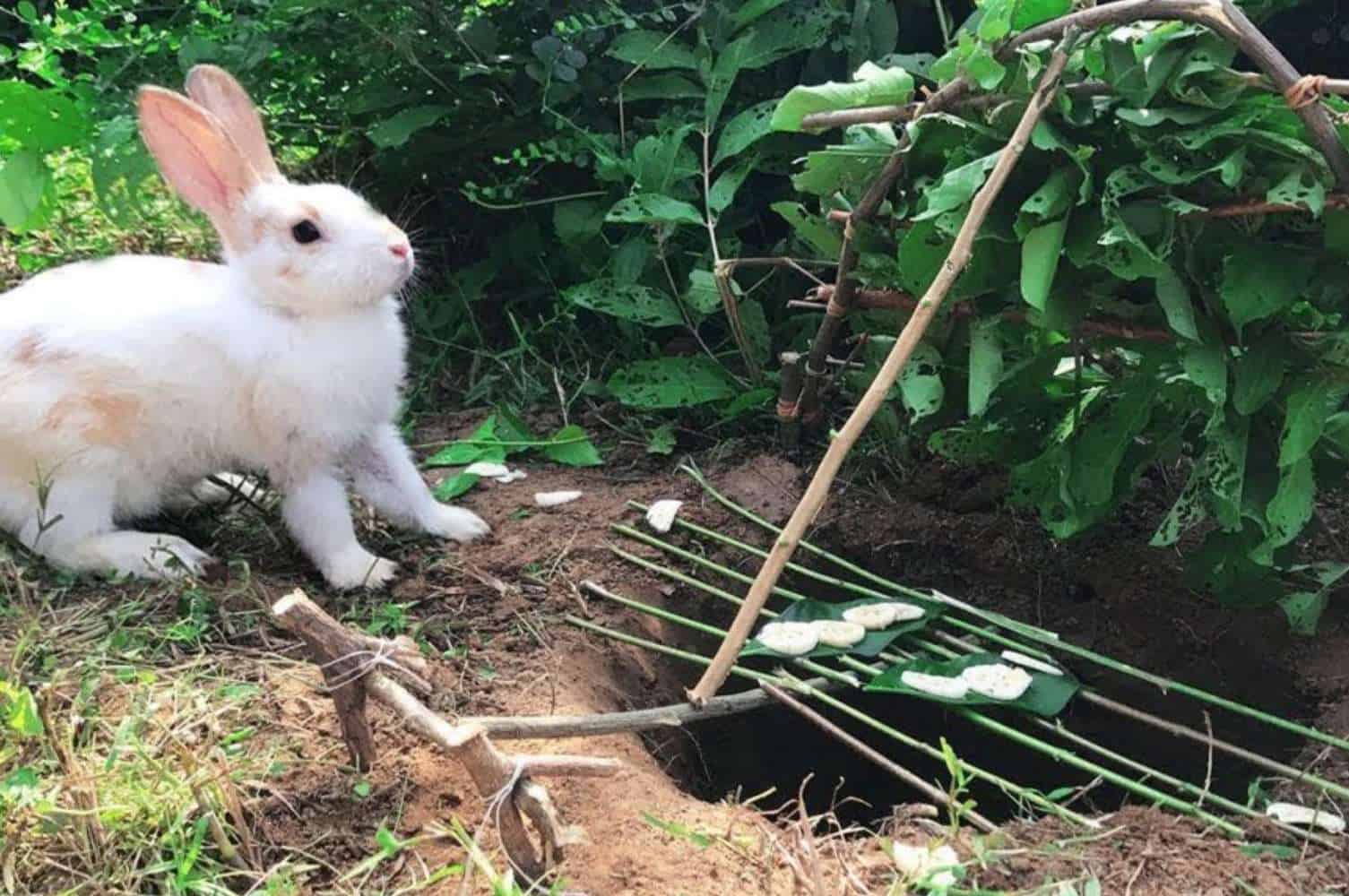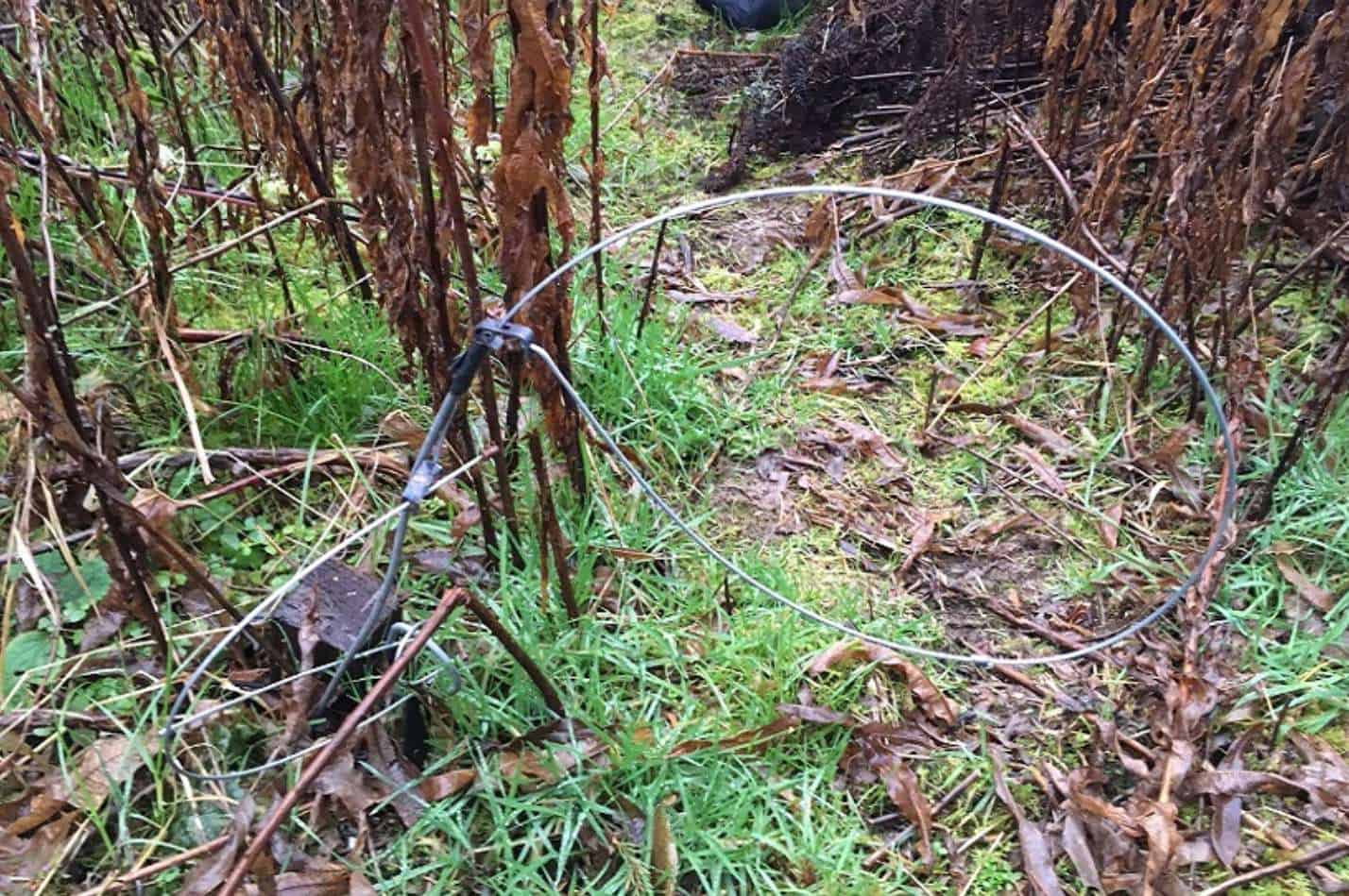Rabbits live in woodlands and meadows. They frequently make their way into yards, where they can become a nuisance. Good news! There are efficient ways to keep rabbits out of your garden. However, trapping can be fatal at times. Continue reading to learn how to trap rabbits using the three methods below.
Method 1: Using a Cage
Step 1: Select the proper rabbit trap
Live rabbit traps are cages constructed with a metal plate. This plate triggers and closes the trap door once the prey activates it. You can use one or two-door traps. But, you’ll need one that’s between 22 and 30 inches long.
You can create your own to save money. You may also buy these rabbit traps online or at a hardware or animal feed store. Both are effective, but each offers different benefits.
Professional trappers prefer the one-door trap. It allows them to position the bait beyond the trigger plate, luring the rabbit farther within the cage. In contrast, the two-door variation permits the rabbit to get in the trap from two directions. This gives an increased rabbit catch rate.
Rabbits will get uneasy or afraid once trapped. However, a rabbit could see through a trap with two doors. This can provide comfort to the rabbit.
Step 2: Choose a spot to place the trap
Determine the location with the highest rabbit activity. Set up your trap there. Rabbits rarely cross large areas of land, so avoid setting a trap in a spot where the rabbit would be exposed. Set your trap on a level surface. Add a tiny mass on top so other animals can’t knock it over to get to the bait.
Rabbits prefer to live in locations with both cover and open space. These include shrubs, hedges, trees, thick grass, wood, and bushes. You’ll have the best chance of catching rabbits here.
If you can find a rabbit hole, position the trap a few steps from the opening. You can trace rabbit droppings to locate their dens.
Step 3: Place bait
Select a bait that will entice rabbits and set it behind the trigger plate. Use dried foods during wintertime since they are less prone to freeze. Fresh fruits and vegetables will be more effective during summer when food is plentiful.
Place the bait behind the trap opening if you’re using a one-door trap. If you’re employing a two-door variation, place the bait in the middle of the cage, between the two doors.
If typical baits don’t yield results, try experimenting with more unconventional baits. You may try crumbled cheesy biscuits or peanut butter. Rabbits can detect the scent on the trap and will avoid it. Spritz apple cider on the trap to mask the scent.
Step 4: Position your trap
Place your trap now that you’ve put your bait. Follow trap instructions on how to set it up. After setting the trap, check if the trigger is operating properly. The doors should snap shut when you gently press down on the metal plate.
If the rabbit you’re trying to catch is small, it might not be able to activate the trigger. So, add a small weight to the plate so the combined weight will be enough to make the trap work.
Step 5: Monitor your trap
Check your trap frequently after you’ve set it. If a rabbit is trapped and you don’t monitor it regularly, the rabbit may get malnourished.
Remember, you might unintentionally catch other animals. Raccoons and other animals are frequently drawn into rabbit traps. So, if you trapped another species, release it right away.
Step 6: Handle the rabbit properly
If you find a rabbit in your trap, be cautious when lifting it. It is most likely afraid and may bite you. Wear impenetrable gloves to prevent the spread of infection if a rabbit attacks you. Approach it slowly to avoid frightening it even more.
If you catch a rabbit to keep it from damaging your garden, transport it miles away if your local laws allow it.
Method 2: Digging a Pit Trap
Step 1: Choose a location
A pit trap is one of the easiest but least effective methods of catching a rabbit. It only involves the use of the rabbit’s natural habitat. To begin, you’ll need to locate a suitable spot for the hole. Look for indicators of a rabbit, such as a warren or a rabbit den, footprints, and rabbit droppings.
Step 2: Make a hole
Excavate a hole deep enough for the rabbit not to escape after it is caught. Rabbits can jump three feet high or three meters long. So, dig a deep and narrow hole, making it harder for the rabbit to escape.
Step 3: Conceal the hole
Fill the hole with leaves and twigs that blend in with the surroundings. Don’t pile too much greenery on top to make the hole robust enough for a rabbit to perch on. Use just enough foliage to fool the rabbit into thinking it’s normal ground, but it’ll fall through if it rests on it.
If you’re unsure how much foliage to use, test the trap by putting a five-pound object on top and see if the weight drops in.
Step 4: Set up the bait
After you’ve sufficiently covered the hole, you may want to throw bait on top to entice the rabbit. You can use foods like fruits and vegetables as indicated in the preceding section.
Step 5: Inspect the pit trap often
Now that the trap is set up, all you have to do is check it every day. If you catch a rabbit, you may either relocate or cook it.
The disadvantage of this method is that it’s likely to capture other animals. So, be cautious when inspecting it. You’ll probably find some scared animals inside who are ready to harm you.
Use gloves and proceed with caution, just like you do with a cage trap. Wild animals will certainly attempt to bite you. They may also carry viruses or rabies.
Step 6: Replenish the hole
Fill the hole you dug with soil or leaves after you’ve trapped the rabbit. You don’t want another animal to get hurt or become hungry if they fall into it.
Method 3: Employing a Snare
Step 1: Check local laws
This method can do more than only capture rabbits. It’s a noose mechanism that can also kill animals. Don’t use it if you’re trying to relocate a rabbit. Use it only for hunting. Snares are subject to different laws in different states. So, verify your state’s rules before using one.
Step 2: Look for traces of rabbits
Before setting a snare, pick a site that will provide you with the best results. A snare works best in a more natural location, such as woodland. Where rabbits are plentiful, the indications are easy to spot. Look for rabbit droppings, tracks, or burrows.
Step 3: Gather your supplies
You’ll need wire, two sticks or wood, and a bent tree to build a rabbit snare. You’ll make the noose, trigger, engine, and leader line, all of which are part of a spring snare. This snare is more complex, so you might want to start with a simpler snare.
Step 4: Construct the noose
You’ll need a cord around 18-24 inches in length to make your noose. To begin, make a loop with the end of the wire, roughly a pencil’s diameter. Make your loop by wrapping the wire around the pencil.
Then, make a noose by running a few inches of the excess wire around the loop. Connect the wire’s end to your trigger.
Step 5: Build the base trigger
Make the trigger out of carved-out wood or two sticks that fit together. Form a straight carving from the upper end to midway of a solid stick.
Then slice down approximately an inch parallel to the stick and carve straight from the center to the edge. Carve a cavity in the wood that mimics a mouth out of that block of wood.
Step 6: Create the hook trigger
Place the other stick or block of wood to the base stick’s mouth. Next, draw a line where your hook stick and the base stick’s mouth meet.
Create a pipe structure by carving a solid line midway to the stick. After that, the hook should fit tightly into the base. The hook trigger will be pushed into the base trigger after being turned upside down.
Step 7: Set up the noose
After you’ve finished making your trigger, drive the base into the ground until it feels secure. Then wrap the loose end of your noose around the trigger’s hook.
Step 8: Link your leader line
Suspend this wire from the “engine” and connect it to the trigger’s hook. Wrap the wire around the hook’s end, over where your noose is fastened.
After that, draw the line up to the end of the engine and secure it. The copper wire and hook should draw away from the sturdy base when the target approaches the snare, suspending the rabbit from the bent tree.
Step 9: Test the snare out
Before you position the snare and wait for a rabbit to appear, you should test it with a log of about 5-8 pounds. Push the log onto the noose, ensuring that the engine and hook are cooperating to lift it further up in the air. You’re ready to go if it’s working.
Step 10: Check the snare regularly
Inspect your snare as often as you can. If feasible, check it multiple times daily to ensure that you get your prize before it spoils. You’ll also keep it from suffering more.
Remove the rabbit right away and use it as much as you can.
Summary
Domesticated rabbits can make good pets. However, wild rabbits can be a nuisance. Rabbit trapping is one of the most efficient rabbit management tactics, especially during the colder months. Check which of the three methods listed above can help you best on your quest on how to trap rabbits.


